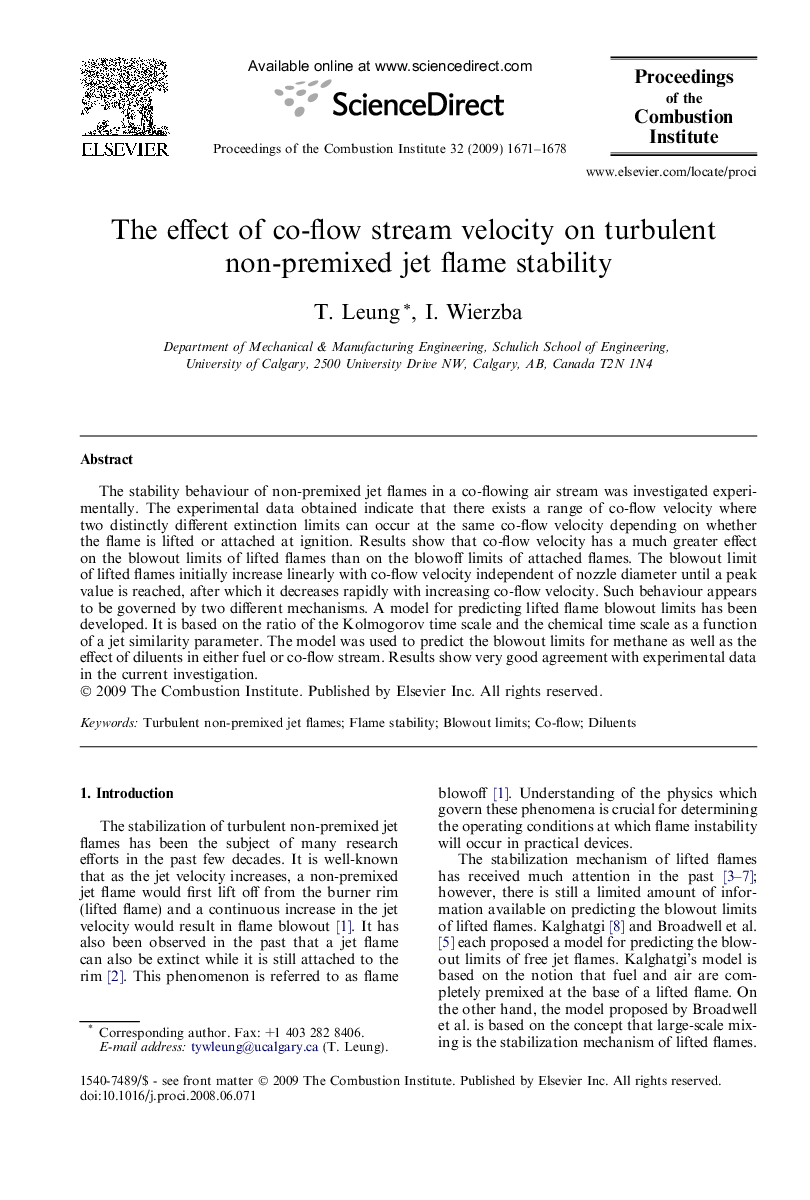| Article ID | Journal | Published Year | Pages | File Type |
|---|---|---|---|---|
| 241013 | Proceedings of the Combustion Institute | 2009 | 8 Pages |
The stability behaviour of non-premixed jet flames in a co-flowing air stream was investigated experimentally. The experimental data obtained indicate that there exists a range of co-flow velocity where two distinctly different extinction limits can occur at the same co-flow velocity depending on whether the flame is lifted or attached at ignition. Results show that co-flow velocity has a much greater effect on the blowout limits of lifted flames than on the blowoff limits of attached flames. The blowout limit of lifted flames initially increase linearly with co-flow velocity independent of nozzle diameter until a peak value is reached, after which it decreases rapidly with increasing co-flow velocity. Such behaviour appears to be governed by two different mechanisms. A model for predicting lifted flame blowout limits has been developed. It is based on the ratio of the Kolmogorov time scale and the chemical time scale as a function of a jet similarity parameter. The model was used to predict the blowout limits for methane as well as the effect of diluents in either fuel or co-flow stream. Results show very good agreement with experimental data in the current investigation.
